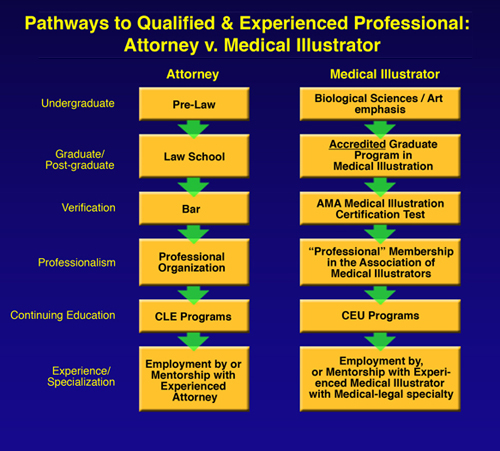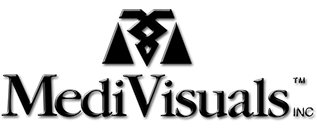By: Robert Shepherd MS, Certified Medical Illustrator, Vice President and Director of Eastern Region Operations, MediVisuals Incorporated
Just as all treating physicians and/or medical experts are not the same, all medical illustrators are not the same. Attorneys typically go to great lengths to ensure that testifying experts for their cases are adequately credentialed, but many give little thought to applying the same due diligence when selecting a medical illustrator. This can be a big mistake because unlike many “professionals”, there is no basic training, licensing, or certification process that is required for an individual to call themselves a “medical illustrator”. Many less skilled and/or less qualified “medical illustrators” market to attorneys – perhaps because attorneys are less able to detect errors in their work. For these reasons, it is the responsibility of the attorney and/or medical expert to their clients to ensure they enlist the services of a medical illustrator who is qualified to provide those services.
Working with a qualified medical illustrator who has experience in the medical-legal area can be a pleasant, enjoyable experience for the testifying expert as these medical illustrators are able to read and comprehend medical records, review imaging studies, and discuss complicated anatomical and medical terms on a very similar level as the expert. On the other hand, working with an un- or minimally qualified and/or inexperienced medical illustrator can be a frustrating and time consuming task that may require multiple revisions of drafts, ineffective demonstrative aids, or even embarrassment during a hearing because of the discovery of some error or inconsistency during testimony.
It can be difficult to determine the qualifications of a medical illustrator based upon looking at their artwork alone. A copy of a résumé or curriculum vitae should be requested. One of the most basic requirements that the résumé should show would include graduation from one of the below medical illustration graduate programs. There are several medical illustration programs in colleges and various institutes in North America and across the globe; however, only five are currently accredited by the American Medical Association, and Commission on Accreditation of Allied Health Education Programs. Those programs include:
Medical College of Georgia - Master of Science in Medical Illustration
University of Illinois at Chicago - Master of Science in Biomedical Visualization
Johns Hopkins University - Master of Arts in Medical and Biological Illustration
University of Texas, Southwestern – Master of Arts in Biomedical Communications
University of Toronto - Master of Science in Biomedical Communications
Other criteria that should be evident in a résumé or CV that would help demonstrate at least minimal qualifications are 1) Certification as a medical illustrator as issued by The Board of Certification of Medical Illustrators and 2) Professional Membership in the Association of Medical Illustrators. Both of these require that the individual possess at least minimal medical illustration training and skill levels. Also, just as there are different subspecialties in medicine which require specific and advanced skills and knowledge, specialization in “medical-legal” illustration requires additional knowledge and experience in addition to those required for general medical illustration. For that reason, it is also wise to select a qualified medical illustrator who is not only familiar with illustration and medicine, but also has a significant amount of experience in creating illustrations for litigation purposes.











